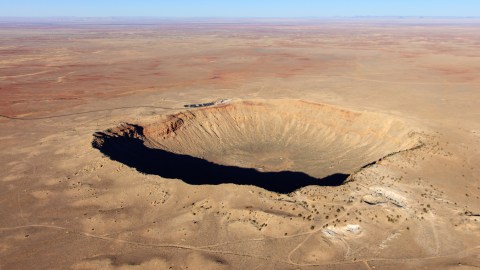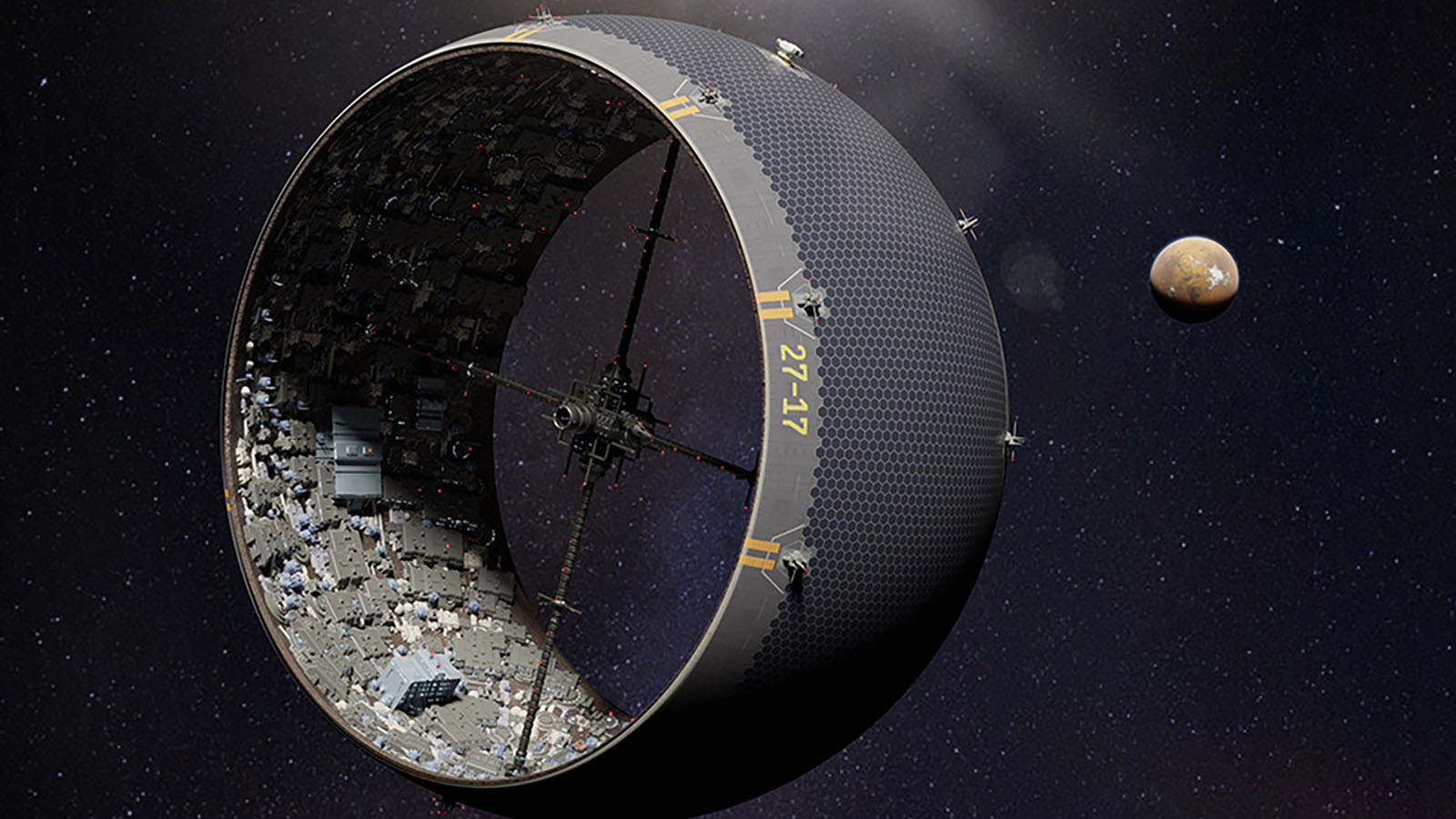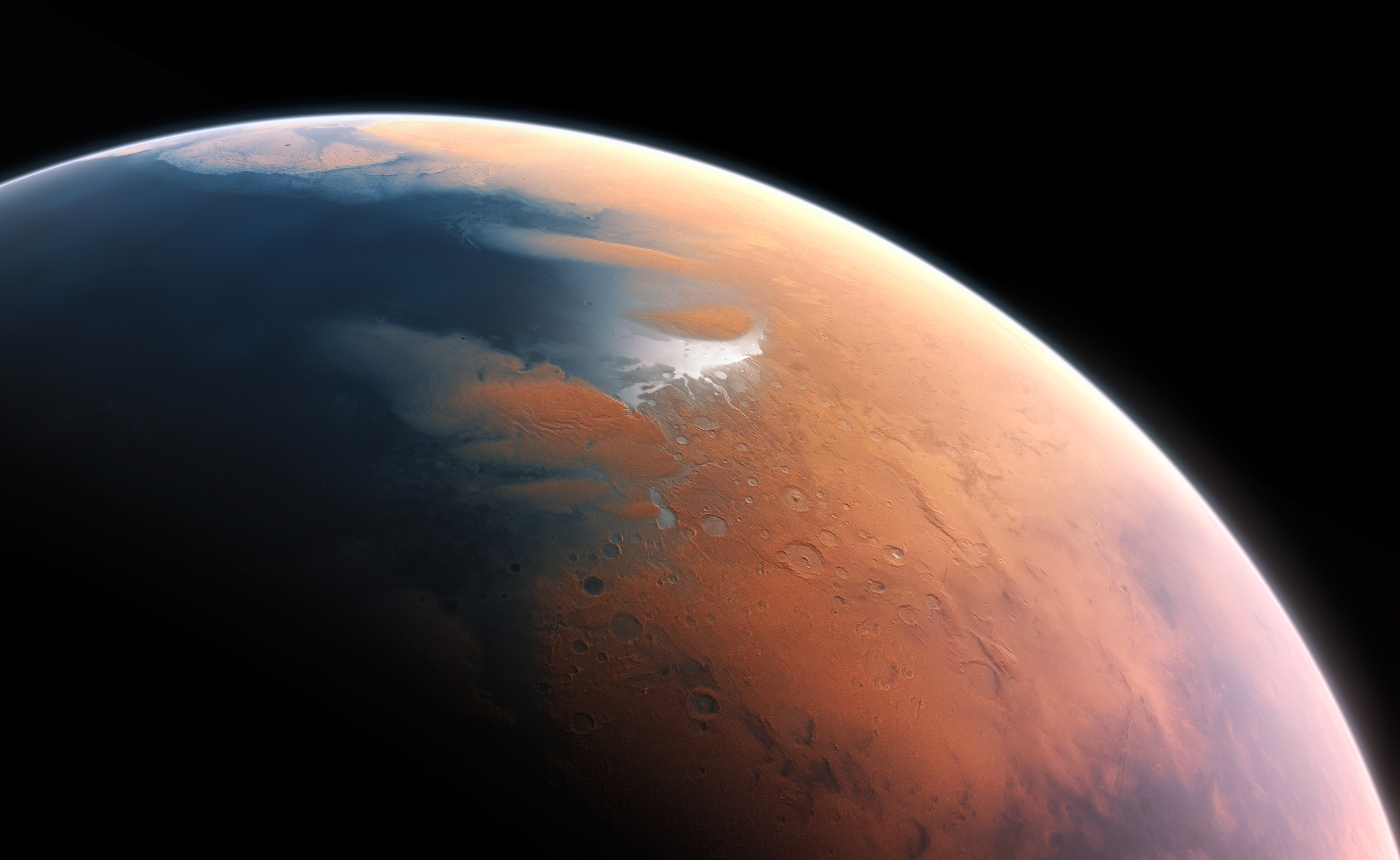The 8 best hidden impact craters on Earth

- Unlike Mercury or the Moon, we don’t see evidence of extensive meteor impacts on Earth.
- But the Earth has been hit several times. The evidence is there, but we must know where (and how) to look.
- Craters both large and small can be hidden right under our feet.
The solar system can be a violent place. When we look at bodies like the Moon or Mercury, we see that they are peppered by the meteor impacts of many eons.
On Earth, though, evidence of collisions is rare. Sure, there’s the famous Meteor Crater in Arizona, and perfectly circular lakes that are in fact water-filled impact craters. But for the most part, craters on our planet have been erased by wind, rivers, or rain — things you will not see on Mercury or the Moon.
But that’s not all. Some craters have vanished altogether, subducted into the Earth through plate tectonics. Others are hiding under an ice sheet. Still others lie at the bottom of the ocean or under layers of sediment. Some craters are just plain remote, or rest in thickly forested areas. Because of this, many craters on Earth have escaped detection until recently.
There are many ways to find craters, but only a few signs that confirm them. “The gold standard is to find shocked quartz in the crater itself,” Brandon Johnson, an associate professor in the Department of Earth, Atmospheric, and Planetary Sciences at Purdue University, explained to Big Think. Johnson is referring to small grains with features that indicate the rock experienced a sudden increase in pressure, which is indicative of an impact event. Other features, he explained, are shatter cones — very rare, cone-shaped features that are formed by a high-velocity shock wave and are only found under an impact site of a meteor or that of a nuclear blast. Then there are microscopic grains of rocks called high-pressure polymorphs, a variation of the crystal structure of a mineral that forms at high pressures. “If you find any of those things in what you suspect to be a crater, that it essentially becomes a confirmed crater,” Johnson said.
Searching the Earth, then, we can find plenty of evidence that our planet underwent substantial bombardment from the Cosmos. Here are Big Think’s top eight hidden meteor craters.
The Hiawatha Glacier impact crater
Under a solid kilometer of ice is a great place to hide a crater, and that is exactly what concealed a 31-kilometer-diameter crater found in northwest Greenland. This crater was so well hidden that it escaped detection until 2018. Scientists found it by accident when they noticed irregularities in radar data that looked like a circular depression. Researchers also found shocked quartz grains in river runoff. Another study last year suggested this impact happened about 58 million years ago by a massive meteor about a kilometer wide. Hiawatha is the northernmost crater known to exist.
The Chesapeake Bay meteor crater
Perhaps most famous for its importance during the War of 1812, Chesapeake Bay hides a massive meteor crater under its waters. Lying under hundreds of meters of sediment, it stayed hidden until 1983, when core samples taken in the area were found to contain fused glass and shocked quartz. The meteor that created this crater was enormous, measuring about 3 km in diameter. About 35 million years ago, it hit the shallow water, creating tsunamis as far away as Europe. Eventually, the crater helped shape the Chesapeake Bay that we know today.
The Sudbury Basin
1.8 billion years ago, a massive comet 10 to 15 km wide hit Earth, creating the Sudbury Basin in what is now Ontario. A lot can happen to a region over the course of two billion years, so what’s left of this crater is highly eroded. That being said, it is one of the world’s largest impact sites. Before it began to erode, the basin would have been 200 km in diameter. When the comet hit, the force of the impact went all the way to the mantle, causing molten rock to leak upward into the newly formed crater. Ejecta from the event is believed to be scattered worldwide. Because of the composition of rocks in the area, scientists determined that the impact was caused by a comet.
Chicxulub, the dinosaur killer
The Chicxulub impact crater came courtesy of the asteroid blamed for the extinction of the dinosaurs. A decade before scientists actually found the crater, they assumed something had hit the Earth around the time the dinosaurs died out because of the sheer amount of extraterrestrial material found within the geologic layer between the Cretaceous and Paleogene periods. If this material was supplied by an impact, it could explain the mass extinction. Indeed, they were right, but they wouldn’t confirm it for another ten years. “It’s not like it was a small crater either. It’s a 180-kilometer-diameter basin,” Johnson explained. At this size, it is one of the three largest craters that still exist on Earth. “The fact that that could be hiding right under our noses is pretty wild,” he said.
Nadir
66 million years ago, around the same time the Chicxulub impact crater formed, an asteroid at least 400 meters wide crashed into Earth near the Nadir seamount off the coast of West Africa. This crater, buried under almost half a kilometer of sediment, was only discovered last year. The impact wasn’t nearly as big as Chicxulub, but it is interesting because it happened nearly concurrently with the larger asteroid. We are left to wonder: Why did two asteroids hit the Earth in such quick succession? Were they pieces of a larger asteroid, or perhaps part of a cluster of asteroids?
Yilan Crater
Not all hidden craters are old. Deep within the forests of China, another crater stayed hidden until recently. Yilan Crater, found in 2021, was called “circular mountain ridge” by the locals. Scientists discovered that it is the partial remains of a crater. It’s from a fairly recent impact, occurring somewhere between 46,000 and 53,000 years ago, and it is the largest known crater that is less than 100,000 years old.
A meteoric wine
In the south of France, there is a 200-meter-wide depression that is home to the winery “Domaine du Météore.” The name is sort of a joke. Seventy years ago, two scientists suggested that the depression resulted from a meteor, but the idea was soon dismissed by the scientific community. That changed when Frank Brenker, a geologist and cosmochemist, visited the winery while on vacation, and the depression caught his interest.
Brenker returned to the region with his colleagues and found compelling evidence that it really was hit by a meteor. First, they detected an anomalous weakening in Earth’s magnetic field, which can occur locally when rocks melt and resolidify. Second, they detected small impact spherules — tiny balls only a fraction of a millimeter across — which are created when an impact heats and melts minerals that recondense as spheres. Third, they found minerals such as diamonds and quartz that underwent shocks, like those due to an impact. Their findings are important because it’s quite difficult to locate small impact craters. And happily for the vintners, it also gives the winery a cosmic origin story.
S3: The crater so hidden, it doesn’t exist anymore
The older the crater, the greater the chance that it simply does not exist anymore, since the Earth’s crust is continuously being remade. But we can still find evidence of these ancient impacts. One of them, called S3, formed 3.24 billion years ago. This impact was made by an asteroid nearly the size of Rhode Island — likely 40 to 70 km across — and it created a crater 500 km in diameter, or about the size of Utah. Even though this crater no longer exists, Johnson and his colleagues found evidence of the impact in the craton, the oldest and stablest rocks. In this layer, they found spherules as well as radium and chromium, minerals that often have an extraterrestrial origin.
Are there more craters hidden around the Earth? Probably — perhaps under your feet.





